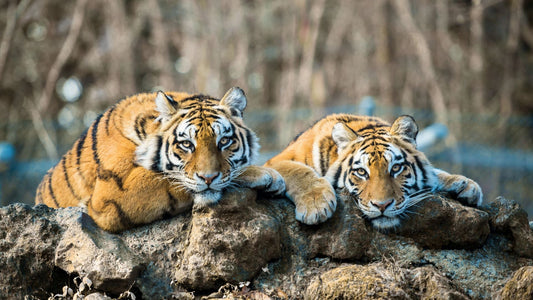The tiger (Panthera tigris) is one of the world’s most recognizable animals, intimately connected with strength and untamed nature. A symbol of nature’s wild places, significant in faiths and folktales of almost all civilizations, tigers inspire millions of people around the globe, from the monasteries in Bhutan to the catwalks of Milan.
Sadly, tigers are on the brink of extinction. Just over a century ago, 100,000 wild tigers roamed across Asia. Today, fewer than 3,900 live in a mere four per cent of their historic range. The largest tiger population can now be found in India, home to half of all remaining wild tigers. Much of this decline has occurred in the past decade.
These beautiful, powerful cats inhabit diverse landscapes, from rainforests to grasslands, savannahs to mangrove forests and high-elevation habitats, so they play an important role in many ecosystems that supply nature and people with water, food and room to roam.
As top predators in the food chain, tigers help keep their habitats balanced by preying on other animals, mainly herbivores. Too many herbivores would lead to overgrazing and degradation of the ecosystem.
Tigers also drive economies. Where tigers exist, tourists go. And where tourists go, money can be made by communities with few alternatives for income. Tiger conservation projects help provide alternative livelihoods for rural communities.
To safeguard tigers, we need to protect large swaths of forest across Asia where they live. By protecting these biologically diverse places, we can also preserve many other endangered species that live there. And, forests protected for tigers are known to store more carbon than other habitat types, helping to mitigate climate change.
credit: https://wwf.ca/species/tigers/




